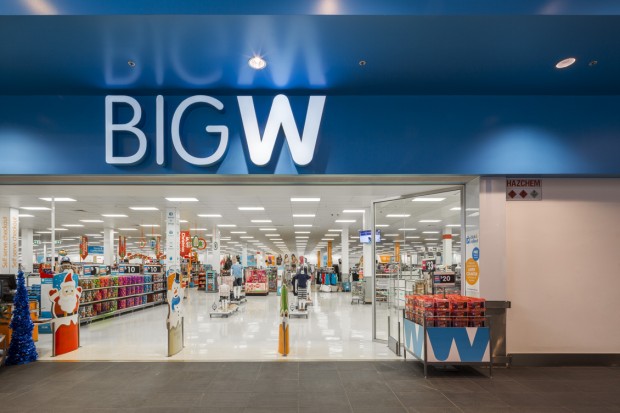 Woolworths Group chief executive Brad Banducci says there’s still a long way to go before trouble child Big W manages to find its feet in Australia’s beleaguered department store sector after the timing of New Years Day and NSW school holidays weighed on the chain’s third quarter.
Woolworths Group chief executive Brad Banducci says there’s still a long way to go before trouble child Big W manages to find its feet in Australia’s beleaguered department store sector after the timing of New Years Day and NSW school holidays weighed on the chain’s third quarter.
BIG W’s comparable sales increased by 3 per cent for the 13 weeks ended 1 April but when adjusted for the timing of Easter fell by 1.2 per cent, still a material improvement on the 5.6 per cent decline experienced in the prior corresponding period (pcp).
Speaking to analysts on Wednesday morning, Banducci said that while the discount department store has managed to attract many of its core customers back to the business by investing in price and repositioning its merchandising strategy, there was still work to do in attracting new customers.
“We still have a long way to go,” he said. “We’re very realistic that we’ve still got a lot of work to do to attract new customers into our stores.”
Total sales increased by 3.2 per cent to $770 million for the quarter but declined by 1.3 per cent on an Easter adjusted basis, compared to a 6 per cent Easter adjusted decline in the pcp.
BIG W is expected to lose between $80 and $120 million in FY18 after booking a $150.5 million loss in FY17. Woolworths is hoping to turn the business back to profit in the coming years, having previously said that its open to possibly offloading the business once its performance has improved.
Losses thinned to $10 million in the first half of fiscal 18 though after Woolworths dropped the price on 2000 core product lines by an average of 20 per cent, breathing some life back into its top line.
While Easter adjusted figures were negative, adjusted items per basket growth was 4.1 per cent and Banducci said that Big W’s underlying performance was more positive than the figures suggested.
Citi analysts said Big W’s underlying sales appear to have been flat for the quarter, which would indicate a slight slowdown after comp growth of 0.1 per cent in the second quarter.
Apparel was singled out as a difficult category, impacted by unseasonably warm weather in Autumn, partially offsetting stronger growth in Easter-related ranges during the quarter.
Woolworths continues to deal with lag times associated with re-positioning its merchandising strategy as part of its multi-year turnaround of the business.
“The challenge we have is the lead and lag times of getting product into the country given it is all generally direct sourced out of Asia,” Banducci said on Wednesday.
Adjusted comparable transaction growth declined by .1 per cent, impacted by the timing of New Years Day, which offset underlying volume gains driven by more competitive pricing.
Comparable item growth was up 4 per cent for the quarter, compared to the 3.5 per cent decline booked in the pcp.
Banducci would not be drawn on whether Wesfarmers owned chains Kmart or Target had mustered a competitive response to BIG W’s price investments over the course of the quarter but last week Kmart chief Ian Bailey said his business had managed to take share across the market.
Kmart’s sales increased by 10.2 per cent to $1.24 billion for the third quarter, while comparable store sales were up 6.8 per cent.





